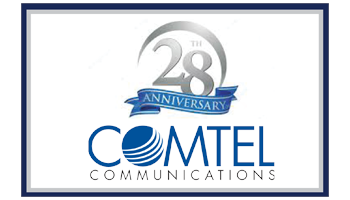Cost Optimization of Communications Spend - Part 1: Telecom Audit
As businesses are getting back to work after a prolonged disruption to their usual operations, one item on many “to do” list is a review of technology services, including communications spend. You should be aware of the true costs of communications spend on your company as well as evaluating actual needs to ensure business continuity.
According to AOTMP - an information services company focused on establishing and maintaining telecom, mobility, and IT management environments, organizations spend $1.5 trillion dollars a year, globally, on fixed and mobile telecom services. Far more than they should.
Thanks to the rapid evolution of communications technologies over the past two decades, it’s become easier and more efficient to collaborate and advance business objectives. However, there is one looming negative side.
Most companies have acquired a hodgepodge of landlines, mobile contracts, IP-based networks, cloud services and more. While the bills continue to be paid, these businesses often lack full visibility into what it is that they’re actually paying for. Without a solid grasp into the full extent of this inventory, organizations may be paying for lines and services that are no longer needed or aren’t fully utilized. There’s an enormous opportunity for businesses to significantly reduce their telecom spend.
In the following five-part series, we explore the five best practices based on transparency and modernization for evaluating your communications spend and practical ways to reduce costs. When implemented across the board, organizations can regain visibility and control for all of their telecom assets across the enterprise, enabling them instead to direct their efforts towards driving business transformation and growth initiatives.
Best Practice #1: Telecom Audit
One of the initial and necessary steps to reduce one’s telecom spend is to conduct a comprehensive audit. It’s a multi-step process that can be time-intensive, especially for multi-location businesses. Done right, organizations can reap significant benefits.
Here are the basic steps to conducting an audit:
- Scour Your Invoices – Create a spreadsheet or database to track every supplier, service, and their associated costs and usage information based on the invoices. Since most telecom bills contain errors, the services you are logging will need to be reconciled with what you are actually using—as well as with what you’ve contracted for.
- Obtain Contracts – If these aren’t immediately accessible, contact your suppliers to request the latest versions. Then match the contracted services with what you’re being billed for. Note any discrepancies, how long is left in the term, or if it’s a pay-as-you-go agreement.
- Physical Audit – Next, match what’s been verified between the bills and contracts with what’s actually being used. For fixed telecom services, it’s possible to conduct a visual check to find out what’s installed and whether these are necessary connections. On the mobile side, match the company address book with the spreadsheet information. In both cases, investigation skills may be needed. Call or text unknown numbers to find out who or what they connect to. Numbers could be associated with fax machines, former employees, even elevator call boxes, and emergency building services.
- Identify What Network Services You Can – With non-voice services (hosted PBX, unified communications, SD-WAN, legacy WAN and MPLS, SIP trunks, broadband circuits, etc.), the same process should be followed to reconcile invoices and contracts. Some level of expertise may be needed to conduct the physical audit, but these should be added to the spreadsheet or database as well. Don’t forget back-up and failover circuits.
- Take Stock—After your spreadsheet/database is complete, perform an analysis. Look for where services are provisioned but unused or under-used, where you could be overcharged, and where you could make cost-saving recommendations. Ask questions like: is it necessary to have more than one fax line? Are all ex-employees’ services canceled? Do you need MPLS for all WAN links?
- Optimize — Once the audit and analysis is complete, scale back, replace or cancel superfluous services. Businesses can also optimize their services by grouping them together by department in order to get a clearer picture of the resources being dedicated to each area and where there may be potential waste.
If an audit sounds daunting—don’t forget that there are telecom expense management (TEM) services for a fee.
Another option is to utilize other professionals, like independent telecom agents, who will help with the task at no cost to you. In addition to the audit, a telecom agent or consultant can assist with the procurement of your technology, as well as ongoing care and issue resolution with the selected provider.
Schedule Your Free Communications Audit
About Simplicity
Simplicity VoIP, based in Richmond, VA, provides hosted PBX, VoIP and business telephone solutions nationally to small, medium, and enterprise-level businesses for a comprehensive unified communications experience. It’s Class 5 geo-redundant VoIP platform is offered in addition to fax-to-email, phones and equipment, and managed services. Named as Richmond’s 11th fastest growing company by Richmond BizSense in 2018, Simplicity VoIP’s key to success is its on-site service, installation and training supported 24/7/365 by a world-class client services team.




